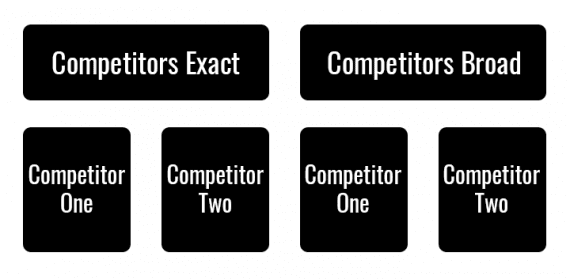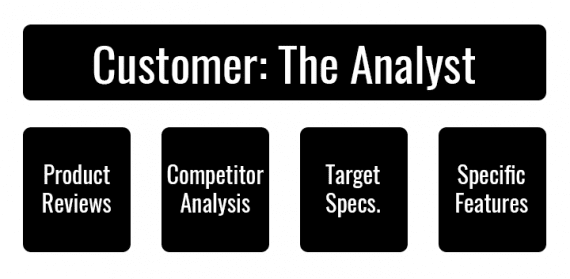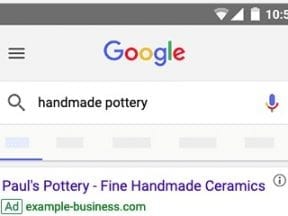Text-based, pay-per-click advertising is a fundamental part of promoting an ecommerce business. These seemingly simple ads can appear higher on a search results page than organic listings, and they can target potential customers who are seeking the products your business sells.
One of the keys to a successful Google Ads search campaign is how an account is structured. It’s important to understand what sort of search campaigns your business should run. Decide how your company will manage ad groups within each campaign. And consider the keywords selected for each ad group.
There are many ways to organize a Google Ads campaign. In this article, you’ll find a brief description of Google Ads campaigns, ad groups, and a few ways these can be organized for an ecommerce business.
Campaigns
A Google Ads campaign is the structural level at which you select your advertising type. You could select, as examples, text ads, image ads, video ads, or call only ads. In this post, I will focus on text ads for Google’s search network.
The campaign level is also where you will set your budget. The budget, not surprisingly, lets Google Ads know how much you want to invest in promoting your ecommerce business and the products it sells.
Ad Groups
The next structural level in Google Ads is the ad group. Ad groups allow you to create themes within a campaign and can help you control the relationship between specific keywords and ad copy.
As a starting point, you might consider developing several ad groups for each campaign. Each ad group might have one to 20 keywords associated with it. And there should probably be between two and four ads for each ad group.
Product Category
The ad structure above aligns campaigns with an ecommerce site’s products.
For example, let’s imagine you manage a large online electronics store. Your online shop has many product categories, such as television and home theater, computers and tablets, and cameras, and video games.
You could build a campaign for each of these product categories. Within the video games campaign, you might have four ad groups, each aligned with a specific kind of keyword to target.

A product category structure has a campaign for each category and then uses the ad groups to organize the types of keyword phrases to target.
- The product keywords ad group would target specific product names. An example is “Super Smash Bros. Ultimate,” which is a specific Nintendo Switch game.
- The brand keywords ad group would aim at the brand name, so it might have a keyword phrase such as “Nintendo Switch games.”
- The category keywords ad group could address how folks search for video games and might include a keyword phrase such as “Nintendo Switch Reviews.”
- The general keywords ad group would target broad keyword phrases such as “video game consoles.”
Objective and Match
Digital marketer Brad Batesole, who is also a popular instructor for LinkedIn Learning, recommends organizing Google Ads campaigns around the objective and match type: An exact match only shows an ad when the user’s query exactly or very closely matches the associated keyword phrase; a board match includes misspellings, synonyms, relevant variations, and related searches.
Let’s consider how this might work for an ecommerce business. Imagine you manage the PPC campaigns for an online store selling its own brand of solid cologne. Your PPC objective is to show up next to leading competitors such as Duke Cannon and Fulton & Roark.

This example has a campaign for exact match and broad match variations of the campaign. Within each campaign, there is an ad group for each competitor.
Following Batesole’s structure, you would create at least two campaigns. Within each campaign, there’s an ad group for each competitor you want to target. The ad group for each competitor would include the same keyword phrases for each campaign. The difference, again, is the match type.
Customer Persona
Your ecommerce business could also organize Google Ads campaigns around customer personas or the way a customer might search for your products.
For this example, imagine that you have an online store selling electric bikes and one of your customer personas is for Phil, who researches everything. He reads online product reviews. He loves comparisons that pit one brand’s electric bike against another’s head-to-head, specification-by-specification.

You might organize your Google Ads around customer personas and the ways a person might look for the products your company sells.
You would create a campaign for the analyst persona. Within the campaign, you would create an ad group for each of the ways that person might look for electric bikes. In the example of Phil “the analyst,” you could have an ad group for reviews, comparisons, target specifications, and even specific features.
Each keyword within the group would seek to match how Phil would search. Create a specific campaign for each of your company’s customer personas.
Building Google Ads
You’ve now seen three ways to structure Google Ads text-based, search campaigns for ecommerce. None of these is perfect because there is not a perfect way to organize and structure a Google Ads campaign. Nonetheless, having some structure is important. Be sure to measure the results and focus on what is working.




